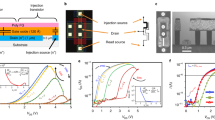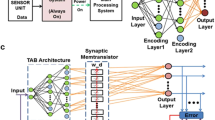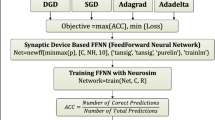Abstract
Hardware implementation of artificial neural networks (ANN) based on MOS transistors with floating gate (Neuron MOS or νMOS) is discussed. Choosing analog approach as a weight storage rather than digital improves learning accuracy, minimizes chip area and power dissipation. However, since weight value can be represented by any voltage in the range of supplied voltage (e.g. from 0 to 3.3 V), minimum difference of two values is very small, especially in the case of using neuron with large sum of weights. This implies that ANN using analog hardware approach is weak against V dd deviation. The purpose of this paper is to investigate main parts of analog ANN circuits (synapse and neuron) that can compensate all kinds of deviation and to develop their design methodologies.
Similar content being viewed by others
Author information
Authors and Affiliations
Rights and permissions
About this article
Cite this article
Lashevsky, R., Sato, Y. Deviation-tolerant floating gate structures as a way to design an on-chip learning neural networks. Soft Computing 6, 462–469 (2002). https://doi.org/10.1007/s00500-001-0162-6
Issue Date:
DOI: https://doi.org/10.1007/s00500-001-0162-6




